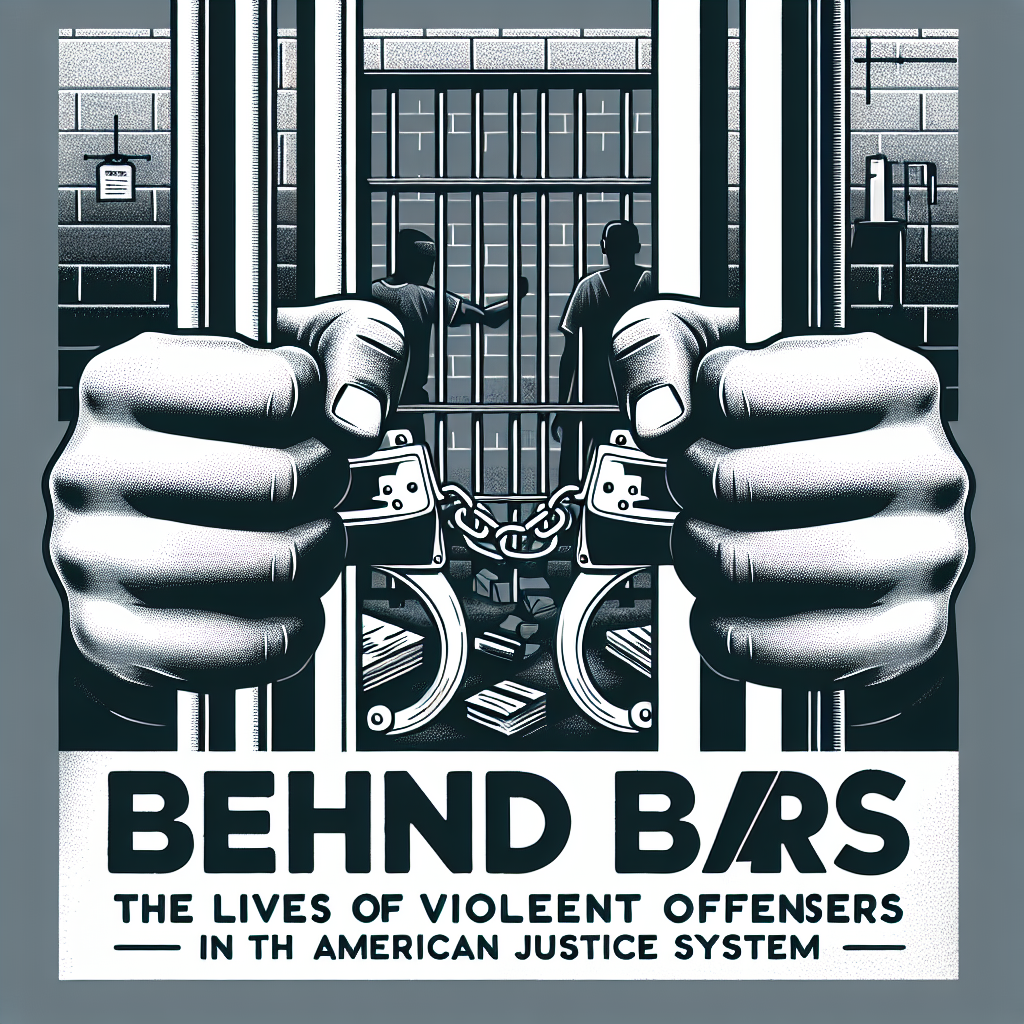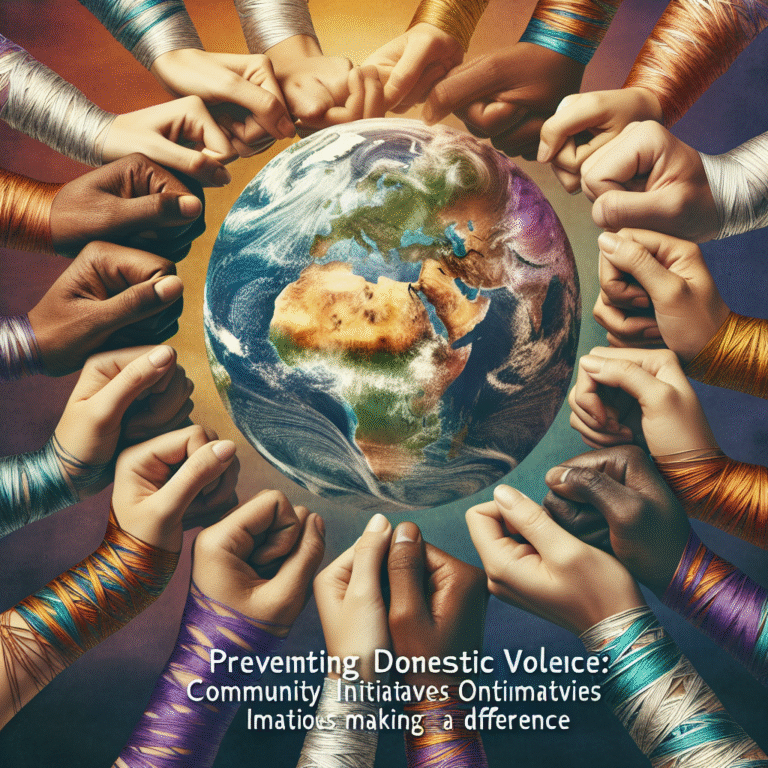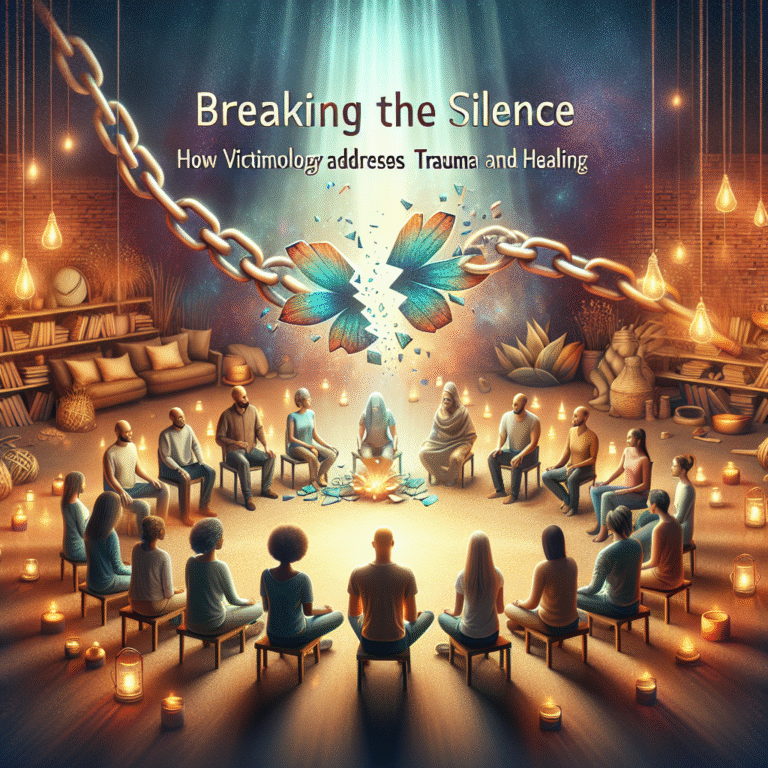
Introduction
The American justice system frequently grapples with the complex realities surrounding violent crime. When we think of violent offenders, we often picture the worst attributes of society—individuals who have caused harm, chaos, and heartache. Yet, Behind Bars: The Lives of Violent Offenders in the American Justice System extends far deeper than just the perception of these criminals. It delves into the nuances of their backgrounds, motivations, rehabilitation efforts, and the broader societal implications. Why does understanding these lives matter? Because recognizing the multifaceted narratives behind violent offenders can significantly impact public policy, crime prevention, and rehabilitation strategies.
Understanding Violent Crime: Definitions and Statistics
As we dive into Behind Bars: The Lives of Violent Offenders in the American Justice System, it’s crucial to define what we mean by violent crime. The FBI categorizes violent crimes into several major categories, including homicide, assault, robbery, and sexual offenses. According to the FBI’s Uniform Crime Reporting Program, there were approximately 1.2 million violent crimes reported in the United States in 2020.
Table 1: Overview of Violent Crimes in the U.S. (2020)
| Type of Violent Crime | Number of Reported Incidents | Rate per 100,000 People |
|---|---|---|
| Homicide | 20,480 | 6.9 |
| Aggravated Assault | 490,000 | 148.3 |
| Robbery | 267,000 | 81.4 |
| Rape | 139,000 | 43.3 |
| Total | 1,216,000 | 382.9 |
This data highlights the severity of the problem, but Behind Bars: The Lives of Violent Offenders in the American Justice System also invites us to question why these crimes occur and who commits them.
The Profiles of Violent Offenders: A Closer Look
In this section, we will explore the varied backgrounds of violent offenders, illustrating how factors such as upbringing, mental health, socioeconomic status, and education level intersect to shape individual pathways to violence.
Case Study 1: The Impact of Childhood Trauma
Consider the story of David, a man whose childhood was marred by domestic violence and neglect. Growing up in a household where he witnessed brutal acts against his mother, he embodied the struggles of many who become violent offenders later in life. Studies show that more than 60% of violent offenders report experiencing some form of trauma during childhood.
Analysis
David’s life illustrates the critical role that early intervention could play. Understanding the links between childhood experiences and later violent behavior emphasizes the need for community support systems and better mental health resources.
The Psychology of Violence: Understanding the Mind
What drives an individual to commit violence? Psychological factors, including personality disorders, substance abuse, and historical trauma engagement, often play a significant role in the narratives of violent offenders.
The Role of Mental Health
The connection between mental health and violent behavior has been widely studied. For example, individuals with untreated mental health issues—such as depression, anxiety, or PTSD—are more likely to exhibit aggressive behaviors. According to the National Alliance on Mental Illness, over 25% of incarcerated individuals have a serious mental health condition.
Case Study 2: The Influence of Substance Abuse
Take the case of Lisa, an individual whose addiction to opioids escalated from recreational use into a destructive lifestyle. The intersection of her substance abuse and violent episodes led to multiple arrests and ultimately, incarceration.
Analysis
Lisa’s situation reveals the urgent need for addressing substance abuse as part of rehabilitation programs. By focusing on treating underlying mental health and addiction issues, we could reduce the recidivism rates among violent offenders.
The Cycle of Recidivism: Breaking Free from Violence
Sadly, many individuals who enter the justice system cycle through without receiving adequate rehabilitation. Behind Bars: The Lives of Violent Offenders in the American Justice System often showcases how these cycles perpetuate violence instead of mitigating it. According to the Bureau of Justice Statistics, over 67% of released prisoners are arrested within three years.
Factors Contributing to Recidivism
-
Lack of Educational and Job Opportunities: Individuals who enter the workforce often lack the skills needed for stable employment.
-
Social Stigmatization: Many offenders face discrimination upon release, making reintegration into society challenging.
- Inadequate Support Systems: Without community resources and support, many offenders struggle to stay away from crime.
Case Study 3: The Role of Community College Programs
A successful initiative in some U.S. prisons is the implementation of community college programs aimed at providing inmates with vocational training and educational opportunities. This approach has led to a 15 % decrease in recidivism rates among program participants.
Analysis
This case underscores the importance of education and community support in breaking the cycle of violence. Providing skills and opportunities can create pathways for success rather than a return to criminal activity.
Rehabilitation Efforts: What Works?
Rehabilitation is a critical focus in understanding Behind Bars: The Lives of Violent Offenders in the American Justice System. It’s imperative to explore what methods are effective in rehabilitating violent offenders and preparing them for reintegration into society.
Innovative Prison Programs
States such as California and Florida have introduced programs focusing on rehabilitation over punishment. These initiatives prioritize anger management, vocational training, and mental health support, demonstrating promising results in reducing recidivism.
Case Study 4: The Pennsylvania Model
Pennsylvania has adopted a model that emphasizes cooperation between various stakeholders—such as law enforcement, mental health professionals, and community organizations—to support individuals with violent histories. In recent years, the state reported a 20% reduction in violent crime rates after implementing comprehensive rehabilitative programs.
Analysis
The Pennsylvania model illustrates how collaboration can create effective solutions that foster rehabilitation rather than simply incarceration.
The Role of Society: A Collective Responsibility
Behind Bars: The Lives of Violent Offenders in the American Justice System also ventures into societal attitudes and collective responsibilities concerning violent offenders. Rather than viewing these individuals through a purely punitive lens, we must consider the collective role we play in shaping preventive measures and rehabilitative paths.
Community Engagement
For communities to thrive, they must actively engage in creating solutions for violence prevention. Community outreach programs, mentorship opportunities, and resources for at-risk youth can thwart the cycle of violence before it begins.
Case Study 5: The Role of Mentorship Programs
Communities that implement mentorship programs have witnessed decreases in gang violence and delinquency. For example, a program in Chicago that linked adult mentors with youth at risk for gang involvement has been credited with reducing youth violence by 30%.
Analysis
Engaging individuals and inspiring collective change can have remarkable impacts on community safety. These programs empower young people and guide them toward positive, constructive pathways.
Conclusion
Behind Bars: The Lives of Violent Offenders in the American Justice System offers a comprehensive and nuanced understanding of why violence exists and how individuals can break free from its hold. As we reflect on these lives, we are reminded that these stories are not just tales of despair but calls to action for a more compassionate and effective justice system.
Understanding the underlying causes of violent behavior, emphasizing rehabilitation, and initiating community-based solutions can collectively lead to remarkable changes. As members of society, we all play a part in shaping the future of our communities.
Key Takeaway
The journey doesn’t end with incarceration; it’s just the beginning. By advocating for change, promoting understanding, and supporting rehabilitation, we can break the cycle of violence and create a safer, more equitable society.
FAQs
1. What qualifies as a violent crime in the United States?
Violent crimes include offenses such as homicide, assault, robbery, and sexual assault.
2. Why do many violent offenders struggle with recidivism?
Many factors contribute, including lack of education, social stigmatization, and insufficient support systems after release.
3. How does childhood trauma influence violent behavior?
Research shows that individuals who experience trauma in childhood are statistically more likely to engage in violent behaviors later in life.
4. What role does mental health play in violent crime?
Untreated mental health conditions can lead to aggressive behavior, making it crucial to address these issues in prevention and rehabilitation efforts.
5. How can communities help reduce violent crime rates?
By implementing outreach programs, mentorship opportunities, and education resources, communities can actively contribute to preventing youth violence and aiding in rehabilitation efforts.
This exploration of Behind Bars: The Lives of Violent Offenders in the American Justice System underscores the complex and often misunderstood realities of violent offenders. Understanding their lives is not just a responsibility but an opportunity for collective growth and positive societal transformation.


















